MY TOP TIPS FOR BEAUTIFUL, HEALTHY, HYDRANGEAS!
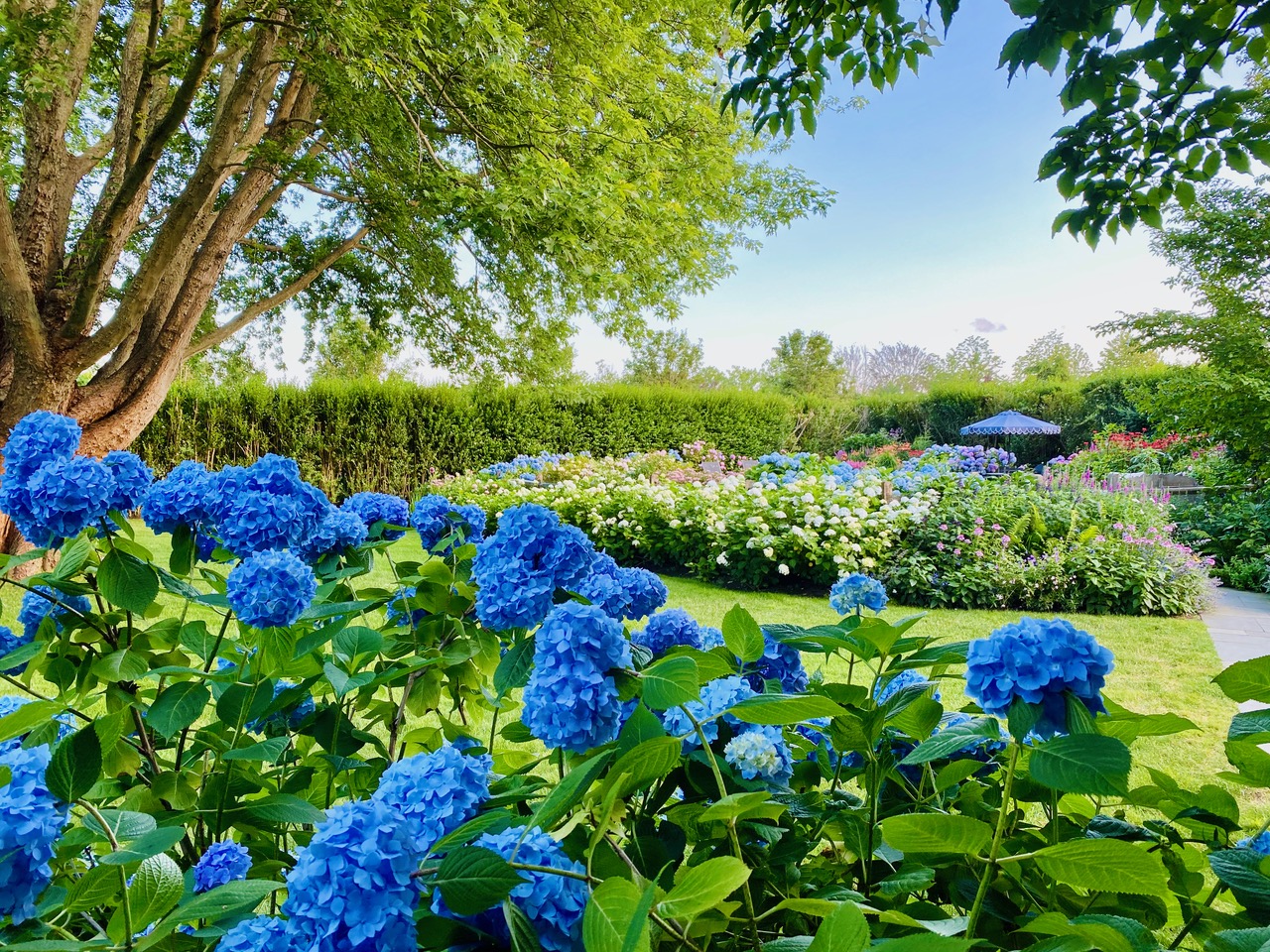 Our hydrangeas at home at Maple Shade in the Hamptons
Our hydrangeas at home at Maple Shade in the Hamptons
Well, we wait all year for this moment to happen− Hydrangea season is upon us! These stunning, beautiful, bountiful plants can give us so much joy AND so much frustration when they don’t perform. I am constantly worried about their hydration, feeding, trimming, and blooming performance each summer (sounds like having a baby!?). I rely on advice from our amazing property team at Landscape Details as well as reading up on as many tips as possible from experts around the globe, including Monrovia Plants. Summer 2024 has been a banner season for Hydrangeas in the Hamptons! I’ve also learned so much on my own caring for the 120 hydrangeas planted here at our Hamptons home, Maple Shade, including Endless Summer Blue and White Wedding shrubs. They wrap around the porch of our 1880 Victorian farmhouse, our pool, and alongside the privet hedge.

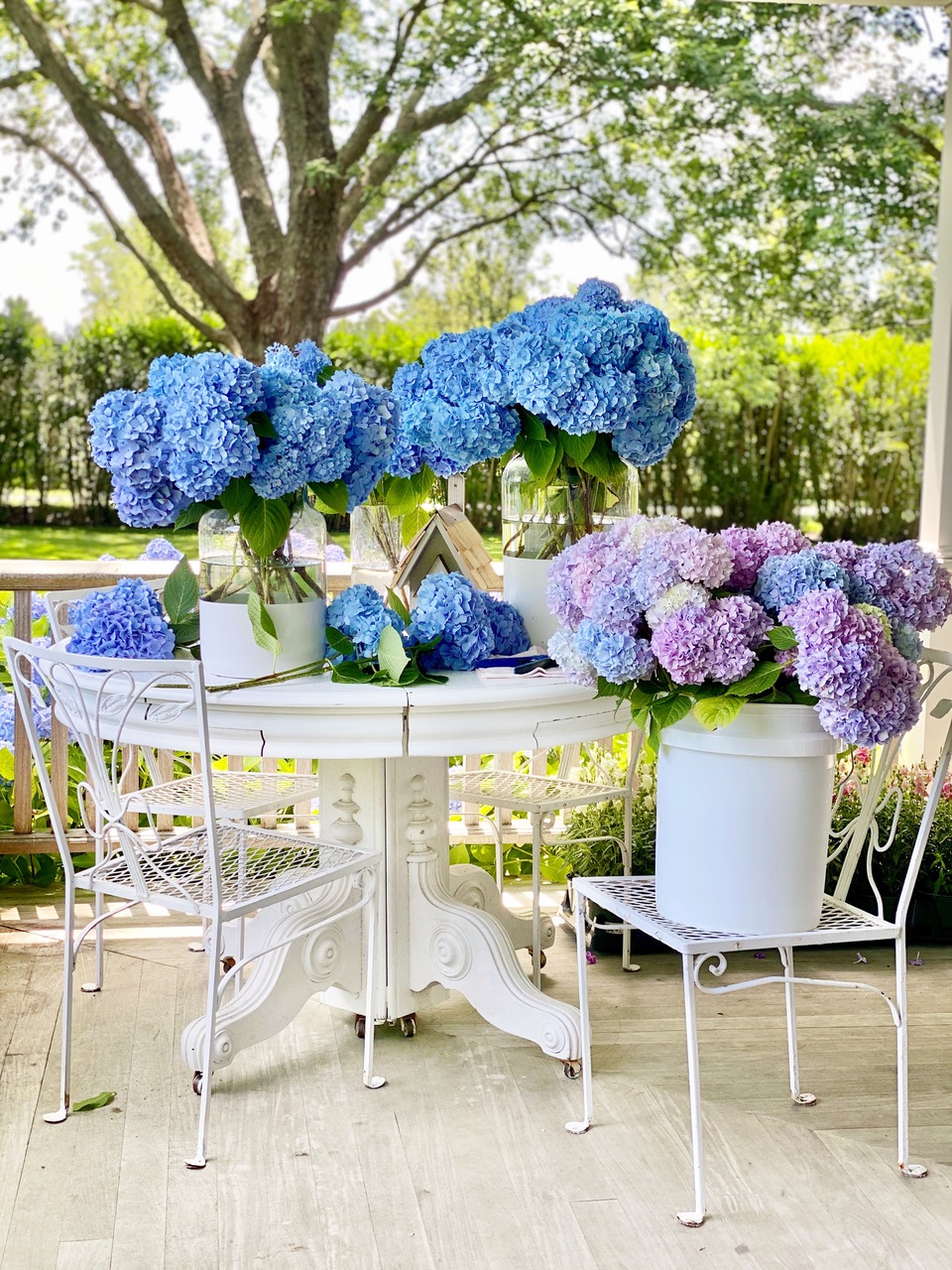
Caring for hydrangeas
Hydrangea flowers are simply spectacular, earning the shrubs prime placement in the landscape. Get the biggest blooms by giving them the best care from the start. Select a plant that will grow well in the conditions provided by your garden. Follow up with proper pruning, watering, and fertilizing. Here’s how to grow gorgeous hydrangeas.

Selecting hydrangeas
Success with hydrangeas starts with selecting the right plant for your garden. Think about where you’re going to plant the shrub. Do you have space for a large plant such as an oakleaf hydrangea (that can grow to a size of 12 feet tall and 6-8 feet wide), or are you looking for a smaller specimen to plant in a landscape bed near the house?
Does your planting site get morning sun, afternoon sun, or all-day sun? Some hydrangeas handle full sun better than others.
Are you looking for a pink-, white-, or blue-flowered variety? Soil pH impacts flower color in bigleaf hydrangeas, but not in hardy hydrangeas.
Is the soil where you’re planning to plant the hydrangea dry, moderately moist, or does it stay wet? Finally, what growing zone do you live in?
If you live in a colder area (USDA zones 5 and lower) you’ll need to select a variety with flower buds that will survive the winter temperatures or a variety that blooms on new growth.
Each hydrangea plant listing on our website contains care information (on the “care” and “overview” tabs) that will help you to select plants that will grow well in the conditions your garden has to offer.
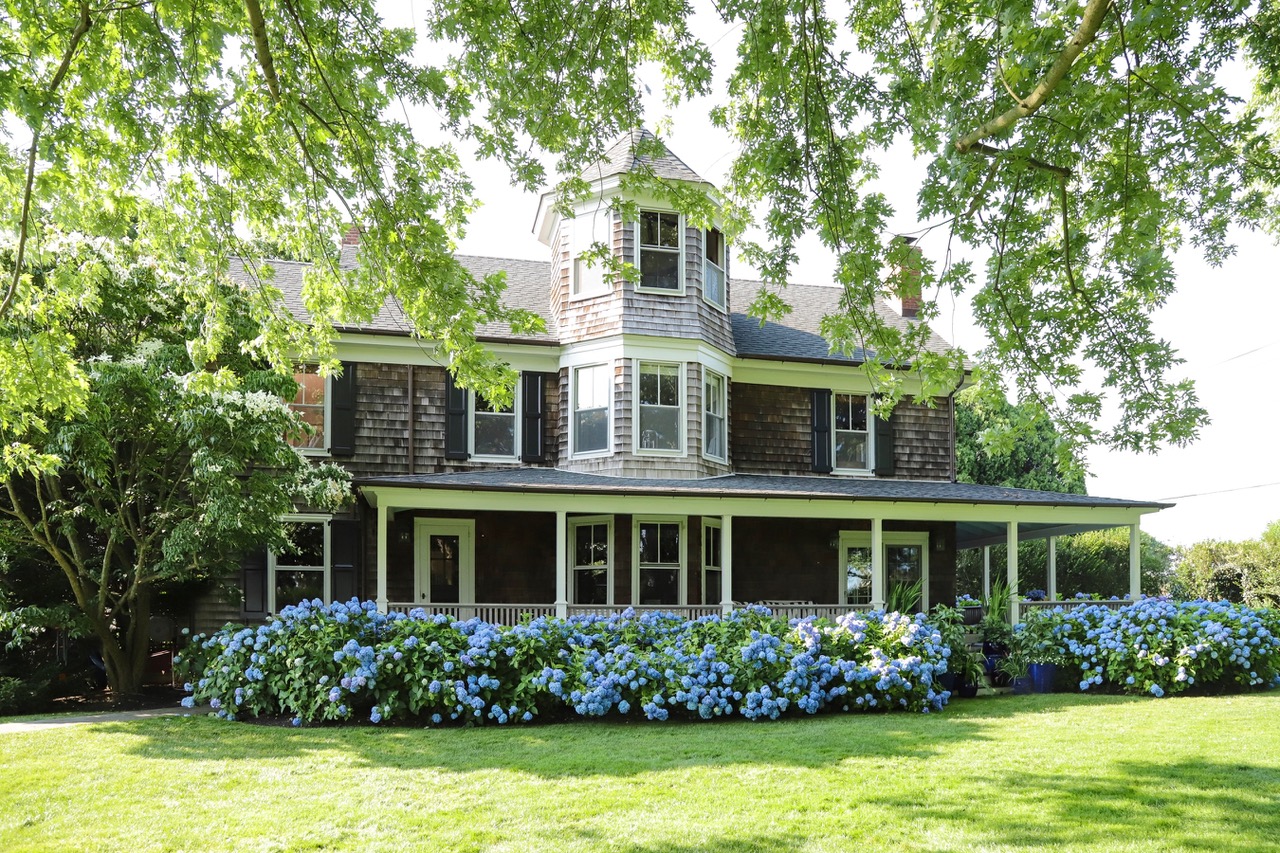
Planting hydrangeas
The best time to plant shrubs is in the fall, followed by spring. This allows the plants to grow healthy new roots without the stress of winter cold or summer heat. For the most part, hydrangeas grow best in full to partial sun in moist, well-drained slightly acidic soils. (Requirements vary slightly by variety. Some hydrangeas can tolerate less sun, a higher pH, or more moisture in the soil.)
To plant, dig a hole that is two to three times as wide as the root ball and just as deep. Remove the plant from the pot and place it in the hole. Place a spade handle across the planting hole across the root ball to ensure that the top of the root ball is level or just barely higher than the soil around the planting hole. When depth is adjusted, fill in around the shrub with the soil that you removed. (There is no need to amend the backfill.) Water regularly to establish. Mulch around the base of the plant, taking care to pull the mulch away from the plant stems.

Pruning hydrangeas
Pruning is, for some people, the most frightening and mysterious of hydrangea care. Don’t be scared! At the very least, if you prune at the wrong time or remove too much of the plant, it will grow back.
Here are the secrets to pruning hydrangeas properly:
Wait until plants start growing in the spring to prune back any dead wood. That is the only way to know which parts of the plant survived the winter. Hydrangeas can be slow to leaf out. Be patient.
Know whether your hydrangea blooms on old wood (last year’s growth) or new wood (this year’s growth). There are a few varieties that bloom on old and new growth. As a rule of thumb, you’ll prune old wood bloomers right after they flower (usually in the spring or early summer). You’ll prune new wood bloomers in the spring after the plants start growing. Some of the newer, more compact varieties need little pruning except to remove dead or diseased branches.
Watering hydrangeas
Most hydrangeas need consistently and evenly moist soil. They don’t do well in bone-dry soils or with wet/dry/wet/dry cycles. Mulching helps conserve moisture. Water deeply and infrequently during dry periods to encourage deep root growth. Some varieties handle more water than others.

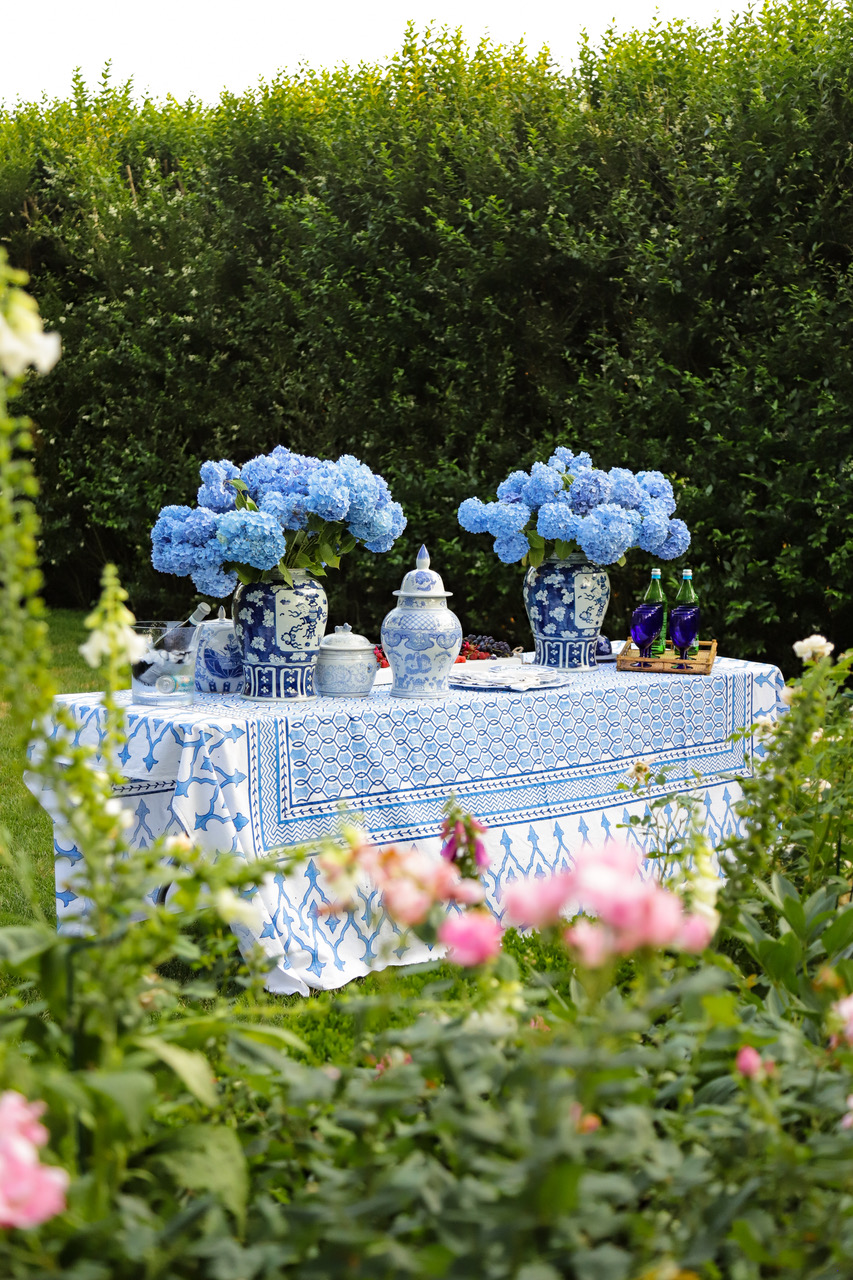
Fertilizing hydrangeas
You will not need to fertilize hydrangea plants every year. In fact, feeding hydrangeas too much nitrogen can result in lots of leaves and few blooms. You can err on the side of a “lean” growing plan and hold off on fertilizing unless the leaves turn slightly yellow in the centers. If the whole leaf turns yellow but the veins remain pronounced, the plant could have a problem absorbing iron. Test the soil pH. You might have to lower the pH by applying aluminum sulfate.
Related to fertilizing is the question of bloom color, which, on bigleaf hydrangeas (Hydrangea macrophylla), is influenced by pH. Low pH leads to blue flowers and a higher pH, pink flowers. There are some cultivars that stay pink, regardless of pH. It isn’t uncommon to end up with purplish flowers, as well.
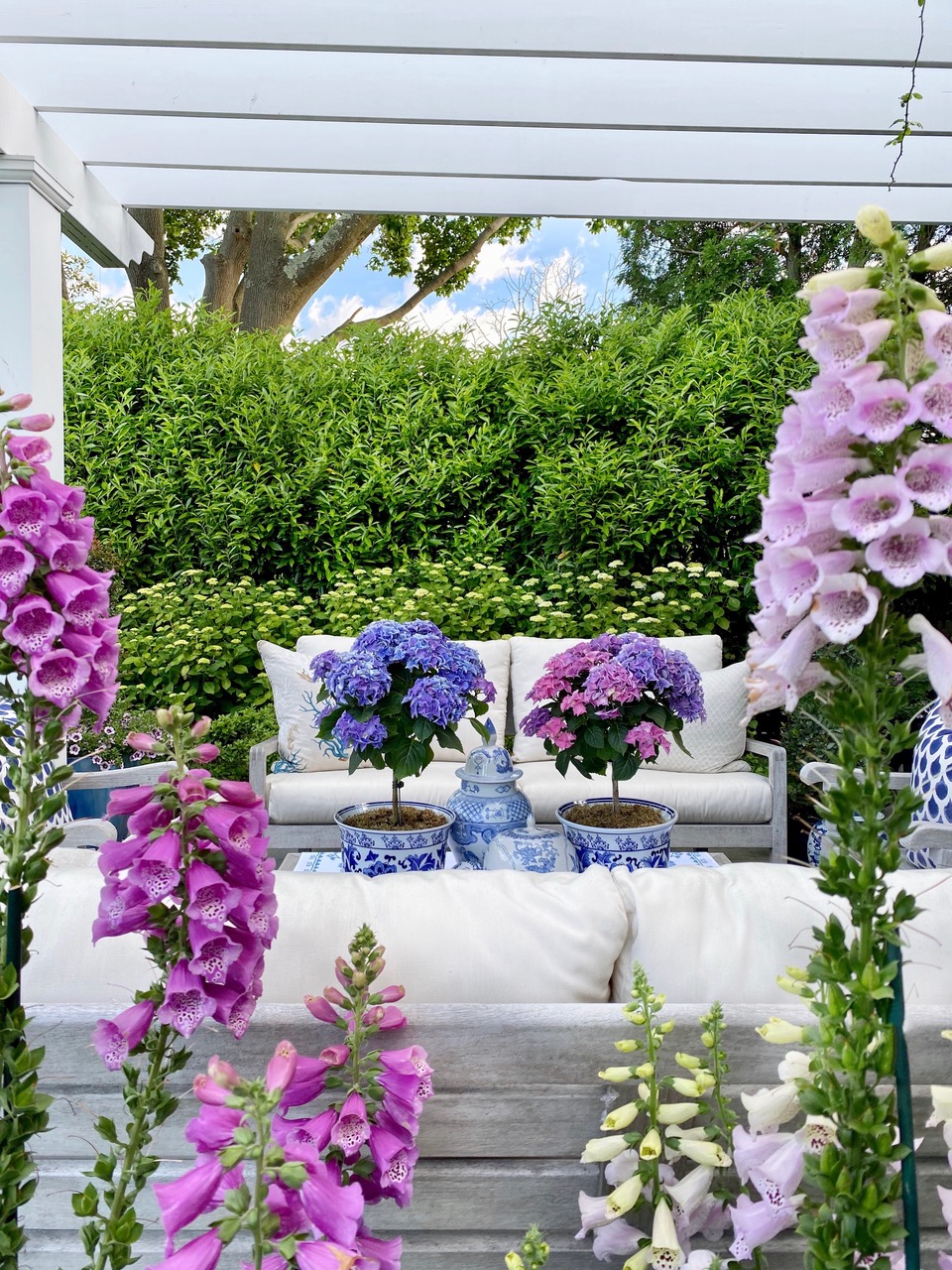
Why Won’t My Hydrangea Bloom?
There are three main reasons why hydrangeas don’t bloom:
- Cold temperatures. Flower buds on bigleaf hydrangeas that bloom on old wood can be killed by winter temperatures, even though the rest of the plant survives. The only solution is to wait for next year. There are some new bigleaf varieties that bloom on old and new wood, making winterkill less of a problem.
- Too much shade. Most hydrangeas need some sun in order to grow and bloom. If temperature isn’t a factor, it could be sunlight.
- Pruning at the wrong time. If you prune hydrangeas that bloom on old wood (bigleaf and oakleaf, primarily) in the spring before they bloom you’ll cut off the flower buds before they open. If you prune shrubs that bloom on new wood too late in the spring or summer, you can cut off flower buds after they form for the summer, but before they open. Late pruning can keep these shrubs from blooming and re-blooming. Try to select hydrangea varieties that can grow to maturity without yearly pruning to maintain an artificially small size. There are so many choices now that you can find a plant that will fit your growing conditions without needing to resort to extreme pruning.


